-
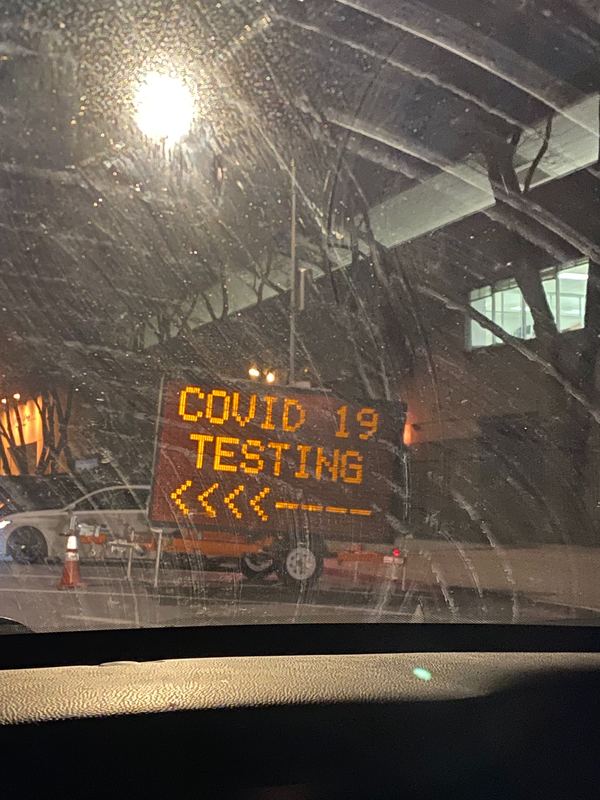
27/04/2020
"Signs From Around: #11, Bronx, NY" is part of a series exploring the signage surrounding COVID-19 from different parts of the world.
COVID Testing Center
-
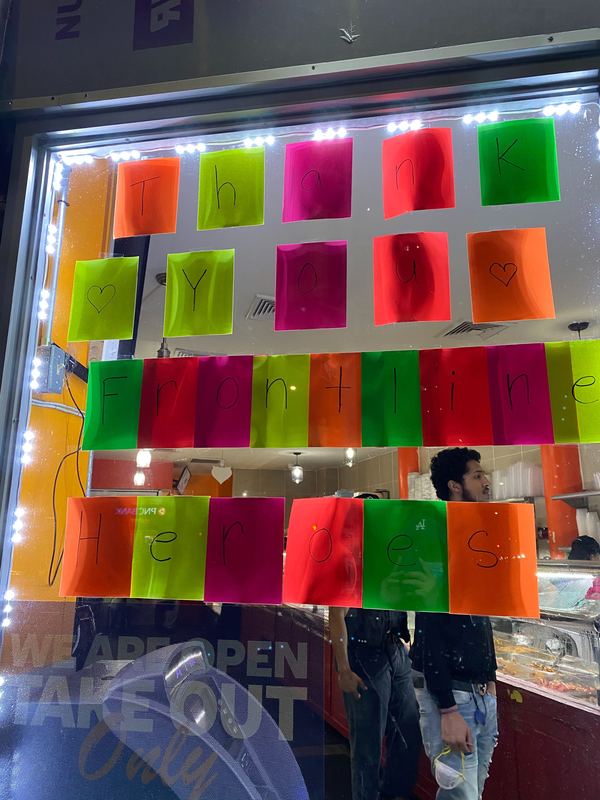
2020-04-26
"Signs From Around: #10, Washington Heights, NY" is part of a series exploring the signage surrounding COVID-19 from different parts of the world.
Letting front line workers know we appreciate them!
#FordhamUniversity #VART3030 #SignsFromAroundSeries
-
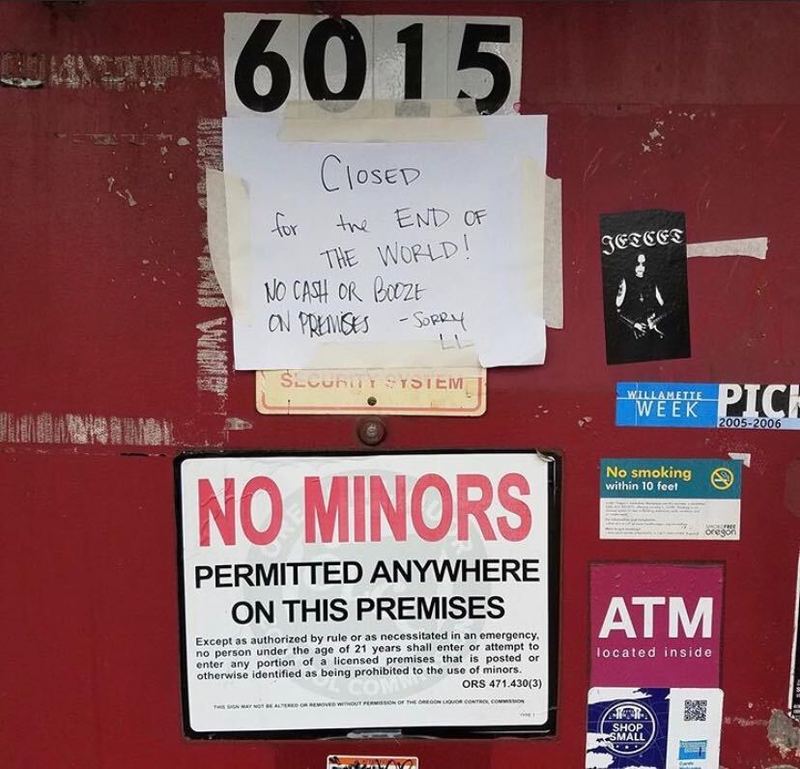
2020-03-27
"Signs From Around: #9, Portland, OR" is part of a series exploring the signage surrounding COVID-19 from different parts of the world.
Business owners give looters a heads up.
#FordhamUniversity #VART3030 #SignsFromAroundSeries
-
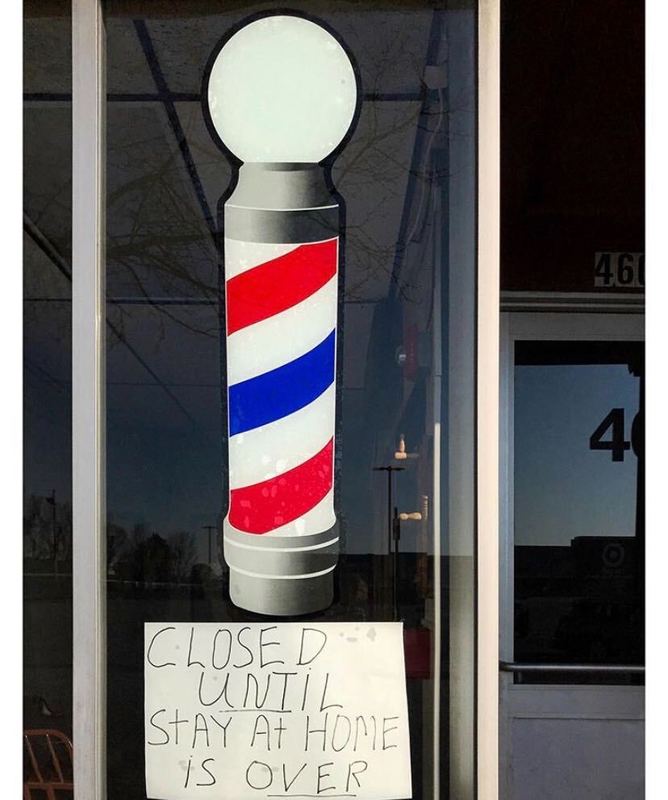
2020-04-21
"Signs From Around: #8, Boston, MA" is part of a series exploring the signage surrounding COVID-19 from different parts of the world.
Stay at home be over.
#FordhamUniversity #VART3030 #SignsFromAroundSeries
-

2020-04-12
"Signs From Around: #7, Montreal, Canada" is part of a series exploring the signage surrounding COVID-19 from different parts of the world.
A local business speaks for many in telling their customer's they're unsure....
-
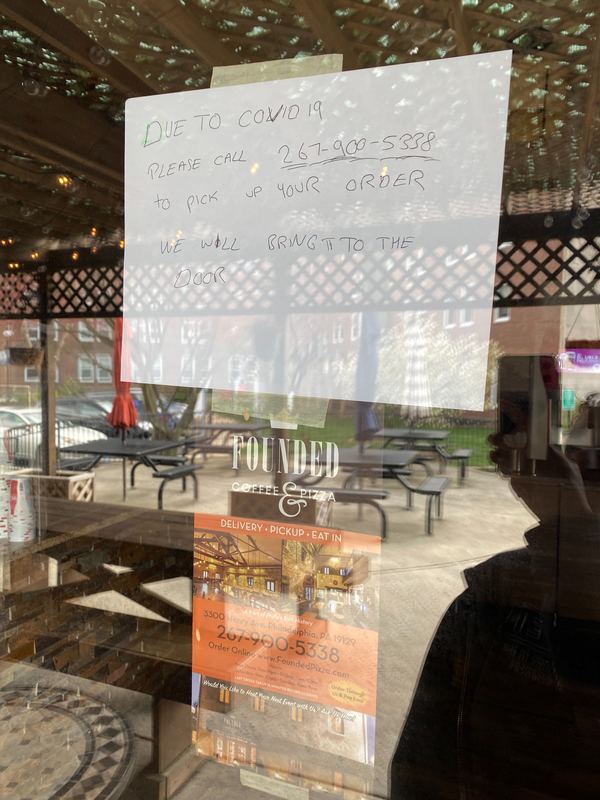
2020-04-09
"Signs From Around: #6, Philadelphia, PA" is part of a series exploring the signage surrounding COVID-19 from different parts of the world.
Local restaurant works around social distancing.
-
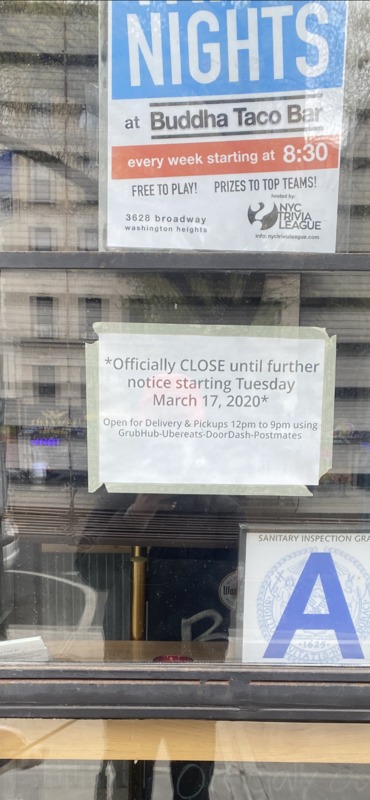
2020-03-20
"Signs From Around: #5, Harlem, NY" is part of a series exploring the signage surrounding COVID-19 from different parts of the world.
Local businesses get ready for closure.
-

2020-04-10
I came to SouthAfrica for 20 days to do a volunteer program in a game reserve. Couldn’t get to Colombia. Im living my Quarantine with a southafrican family who helps me and now we are very close. I was so lucky. This could be the worst thing of my life. But know im so grateful to meet these beautiful, warm people. My southafrican angels.
-
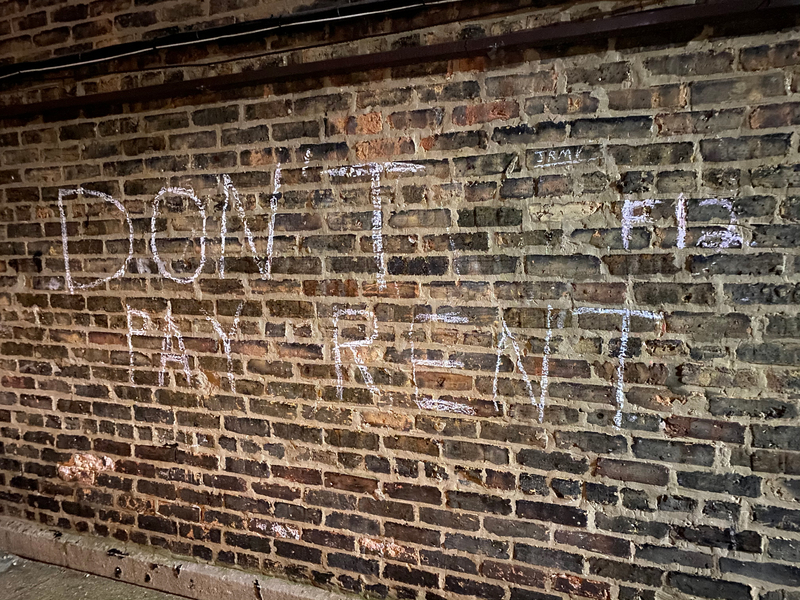
2020-03-19
A chalk message that states "DON'T PAY YOUR RENT" written on the back of my apartment building. This was during the period of quarantine when people were questioning whether or not landlords would still charge rent. I ended up paying my rent.
-
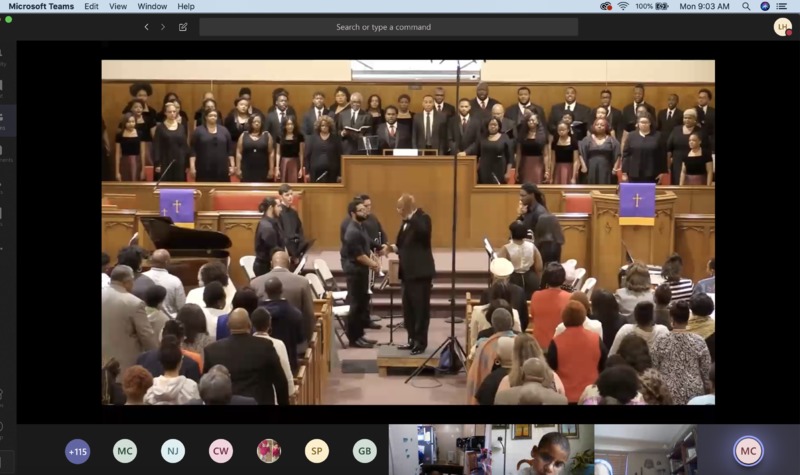
2020-05-04
The tradition is every first Monday of each month the entire school would gather for an assembly. This Monday the assembly was virtual for the first time. Instead of singing, Lift Every Voice and Sing together, we were muted and we heard a muffle Dr. Roland M. Carter version. This was the first assembly I cried.
-
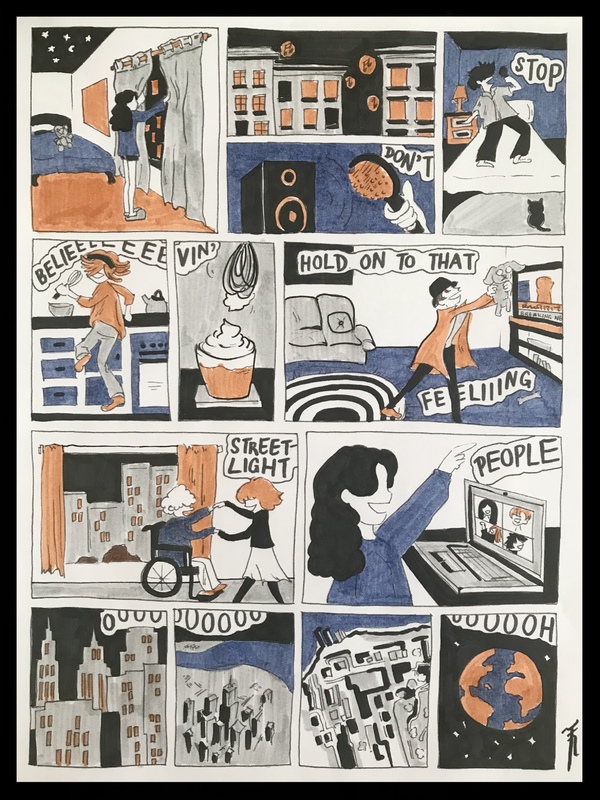
2020-05-03
Finding hope in the midst of a pandemic.
-
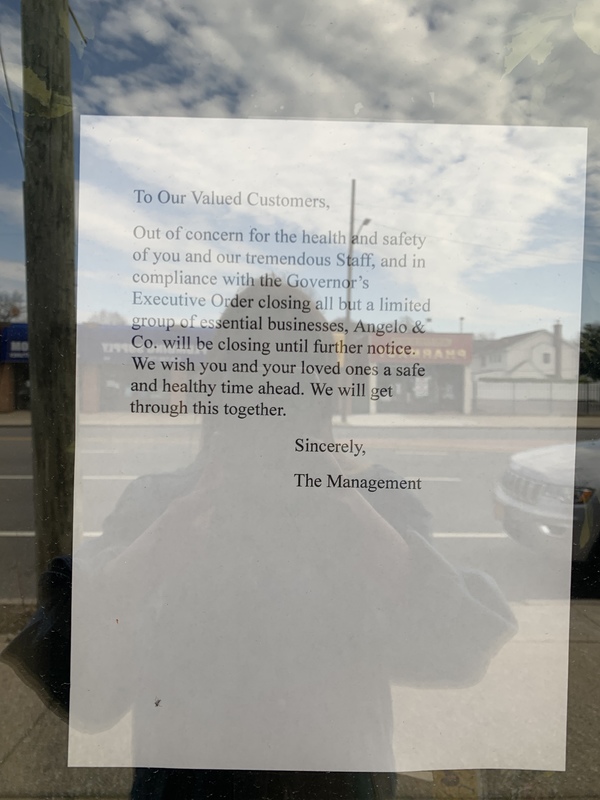
2020-04-12
This is part of a series exploring the role of language, typography and design in informing the general public.
#FordhamUniversity #VART3030 #SignSeries
-
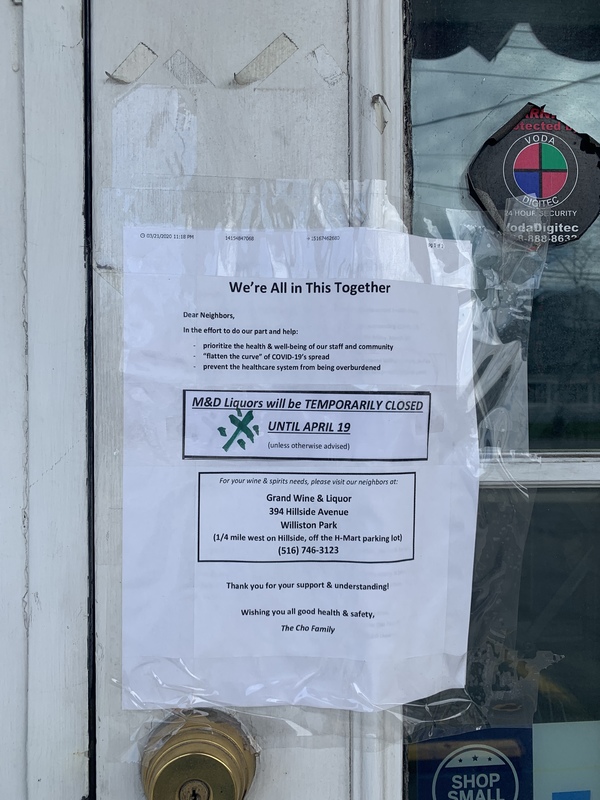
2020-04-12
This is part of a series exploring the role of language, typography and design in informing the general public.
#FordhamUniversity #VART3030 #SignSeries
-
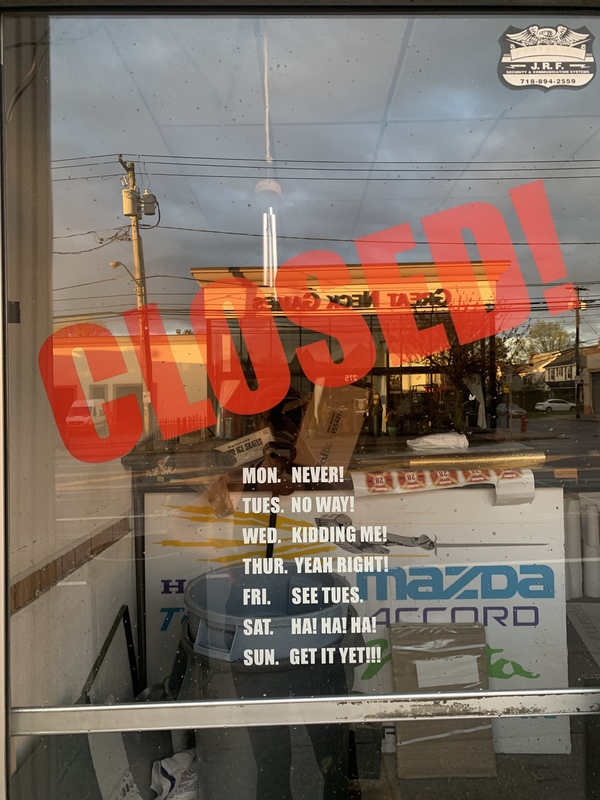
2020-04-13
This is part of a series exploring the role of language, typography and design in informing the general public.
#FordhamUniversity #VART3030 #SignSeries
-
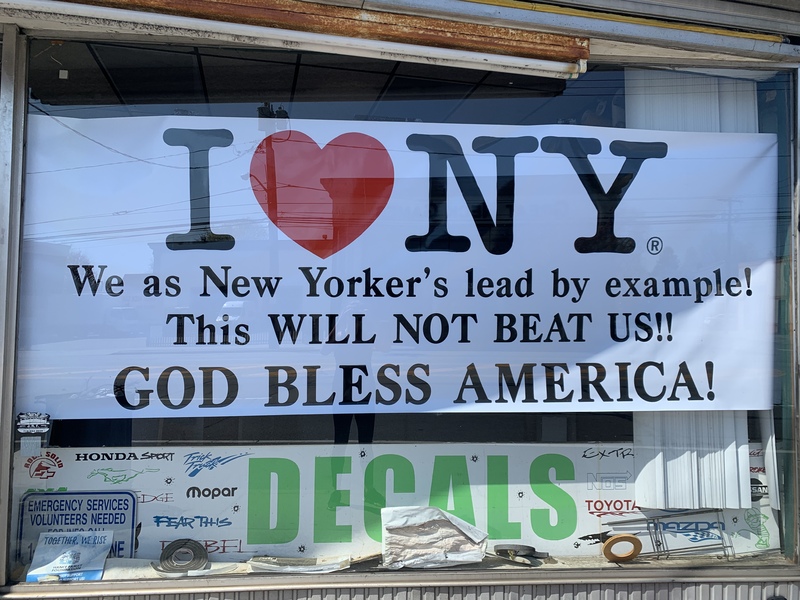
2020-04-19
This is part of a series exploring the role of language, typography and design in informing the general public.
#FordhamUniversity #VART3030 #SignSeries
-

2020-04-12
This is part of a series exploring the role of language, typography and design in informing the general public.
#FordhamUniversity #VART3030 #SignSeries
-
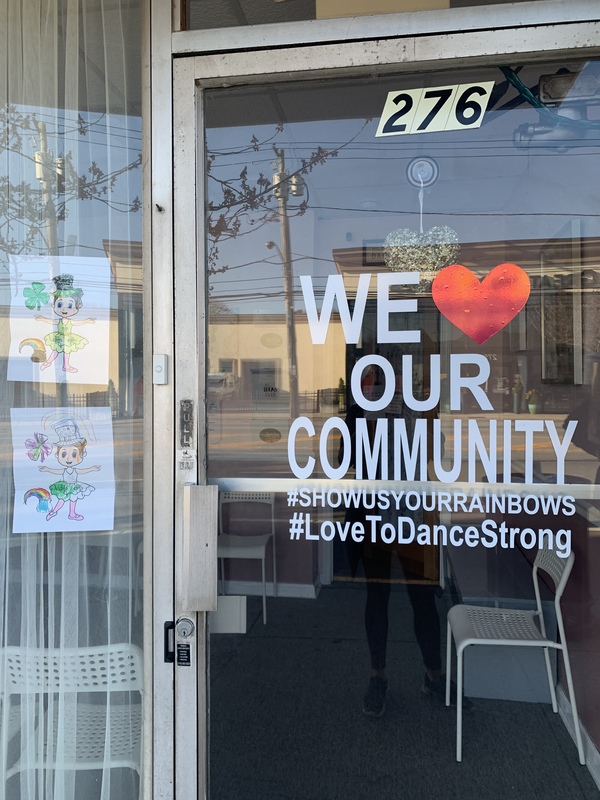
2020-04-08
#friendswhogive was started to teach my children that GIVING to others can be just as rewarding as receiving, especially at the Holiday time."- Denise Heckelman, Founder
#friendswhogive organized a "rainbow hunt" for kids. Families can post drawings of rainbows in their window and as children walk and bike ride around they can count how many rainbows they pass along the way.
#FordhamUniversity #VART3030 #RainbowSeries
-
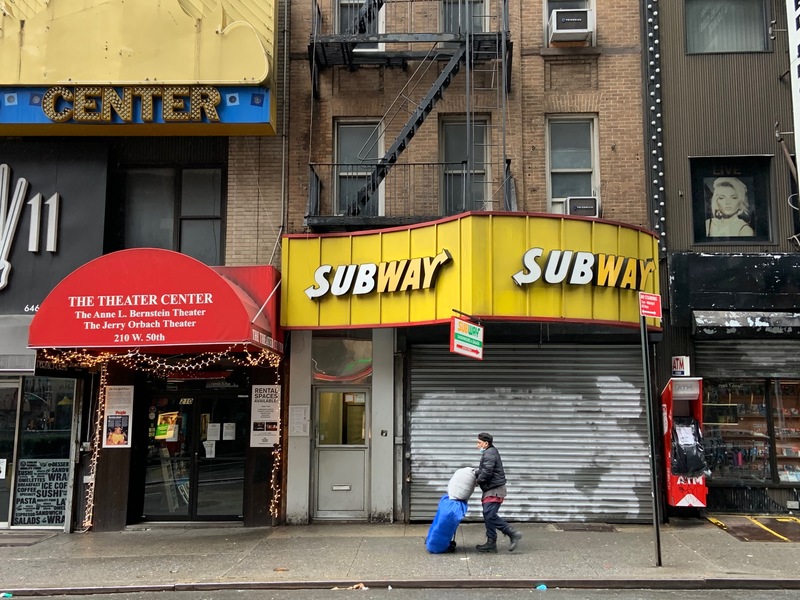
2020-04-24
After college, and a year of vagabonding through Central and South America, I moved to the city forty-two years ago. I was drawn to New York, like many, by the energy and complexity of the city itself, and more specifically, the rich and endless theater found on its streets. While the array of cultural offerings has been a source of nourishment and pleasure, it is the streetlife that keeps me as excited as my first weeks here. What I love about New York is not what I know about the city, but how much I don't know. You cannot exhaust it as a subject, and from the start, I have made the city my primary interest and subject as a photographer. I always go out with a camera and am often mistaken as a tourist because of it. I take that as a compliment, given few can match the exalted state of excitement and awareness that a tourist experiences on a visit.
When the Coronavirus hit and the staggered shutdown of the city went from a talked about possibility to a reality, I found myself inside my apartment looking out at the street below. At first, I made short trips to get necessities, then later added walks through Central Park, and now through the streets of Manhattan. If you think of a photograph as a piece of theater, with a stage set, lighting, cast, and choreography, the new version of the streetlife of New York is an eerie and fascinating show. The set and lighting is much the same, but the cast and choreography have wildly changed. Wandering through Midtown is like walking through an amusement park in the off-season. You experience the present colored by what you know it to be in season.
-
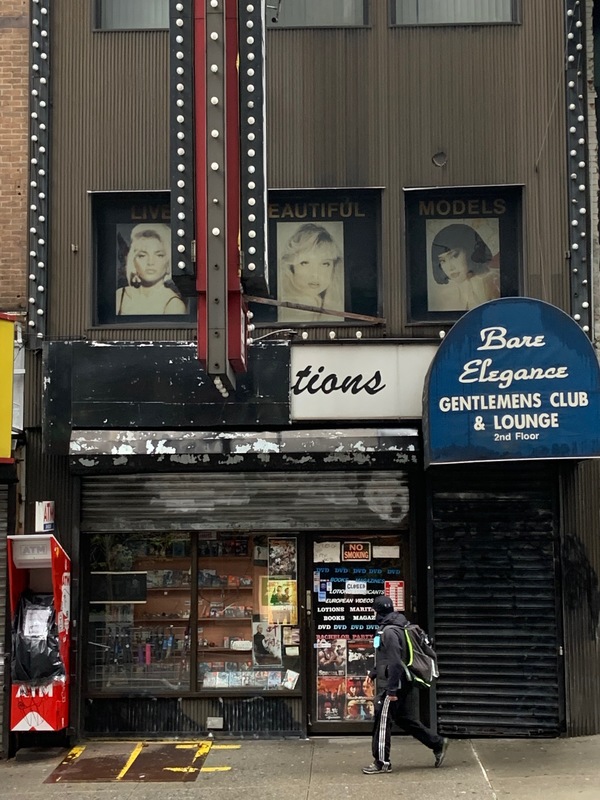
2020-04-24
After college, and a year of vagabonding through Central and South America, I moved to the city forty-two years ago. I was drawn to New York, like many, by the energy and complexity of the city itself, and more specifically, the rich and endless theater found on its streets. While the array of cultural offerings has been a source of nourishment and pleasure, it is the streetlife that keeps me as excited as my first weeks here. What I love about New York is not what I know about the city, but how much I don't know. You cannot exhaust it as a subject, and from the start, I have made the city my primary interest and subject as a photographer. I always go out with a camera and am often mistaken as a tourist because of it. I take that as a compliment, given few can match the exalted state of excitement and awareness that a tourist experiences on a visit.
When the Coronavirus hit and the staggered shutdown of the city went from a talked about possibility to a reality, I found myself inside my apartment looking out at the street below. At first, I made short trips to get necessities, then later added walks through Central Park, and now through the streets of Manhattan. If you think of a photograph as a piece of theater, with a stage set, lighting, cast, and choreography, the new version of the streetlife of New York is an eerie and fascinating show. The set and lighting is much the same, but the cast and choreography have wildly changed. Wandering through Midtown is like walking through an amusement park in the off-season. You experience the present colored by what you know it to be in season.
-
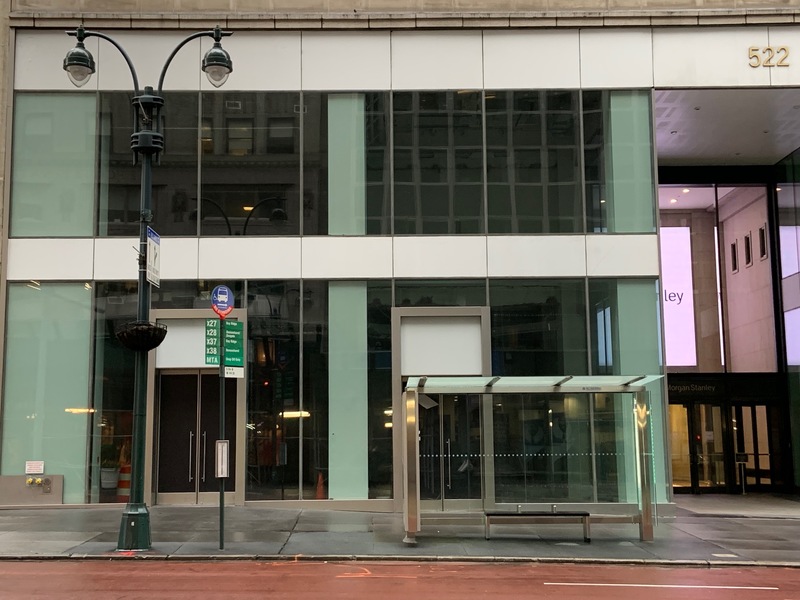
2020-04-24
After college, and a year of vagabonding through Central and South America, I moved to the city forty-two years ago. I was drawn to New York, like many, by the energy and complexity of the city itself, and more specifically, the rich and endless theater found on its streets. While the array of cultural offerings has been a source of nourishment and pleasure, it is the streetlife that keeps me as excited as my first weeks here. What I love about New York is not what I know about the city, but how much I don't know. You cannot exhaust it as a subject, and from the start, I have made the city my primary interest and subject as a photographer. I always go out with a camera and am often mistaken as a tourist because of it. I take that as a compliment, given few can match the exalted state of excitement and awareness that a tourist experiences on a visit.
When the Coronavirus hit and the staggered shutdown of the city went from a talked about possibility to a reality, I found myself inside my apartment looking out at the street below. At first, I made short trips to get necessities, then later added walks through Central Park, and now through the streets of Manhattan. If you think of a photograph as a piece of theater, with a stage set, lighting, cast, and choreography, the new version of the streetlife of New York is an eerie and fascinating show. The set and lighting is much the same, but the cast and choreography have wildly changed. Wandering through Midtown is like walking through an amusement park in the off-season. You experience the present colored by what you know it to be in season.
-

2020-04-24
After college, and a year of vagabonding through Central and South America, I moved to the city forty-two years ago. I was drawn to New York, like many, by the energy and complexity of the city itself, and more specifically, the rich and endless theater found on its streets. While the array of cultural offerings has been a source of nourishment and pleasure, it is the streetlife that keeps me as excited as my first weeks here. What I love about New York is not what I know about the city, but how much I don't know. You cannot exhaust it as a subject, and from the start, I have made the city my primary interest and subject as a photographer. I always go out with a camera and am often mistaken as a tourist because of it. I take that as a compliment, given few can match the exalted state of excitement and awareness that a tourist experiences on a visit.
When the Coronavirus hit and the staggered shutdown of the city went from a talked about possibility to a reality, I found myself inside my apartment looking out at the street below. At first, I made short trips to get necessities, then later added walks through Central Park, and now through the streets of Manhattan. If you think of a photograph as a piece of theater, with a stage set, lighting, cast, and choreography, the new version of the streetlife of New York is an eerie and fascinating show. The set and lighting is much the same, but the cast and choreography have wildly changed. Wandering through Midtown is like walking through an amusement park in the off-season. You experience the present colored by what you know it to be in season.
-
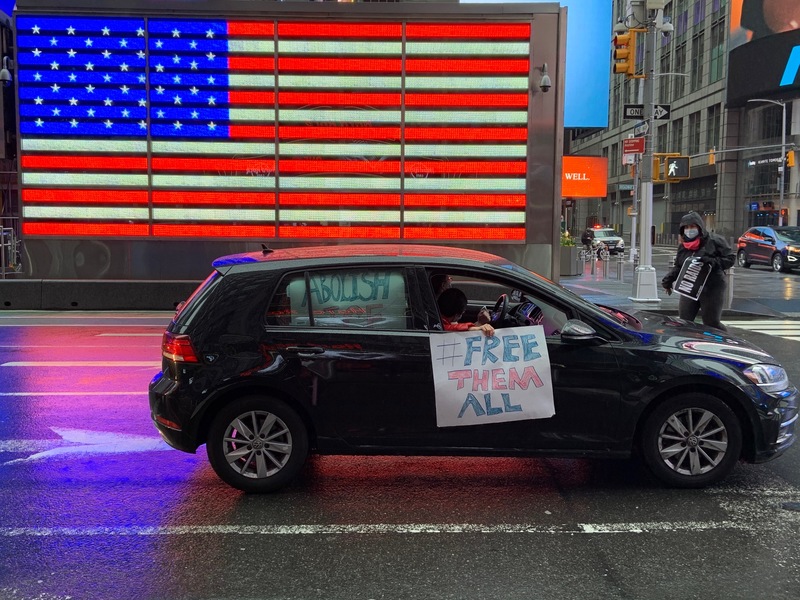
2020-04-24
After college, and a year of vagabonding through Central and South America, I moved to the city forty-two years ago. I was drawn to New York, like many, by the energy and complexity of the city itself, and more specifically, the rich and endless theater found on its streets. While the array of cultural offerings has been a source of nourishment and pleasure, it is the streetlife that keeps me as excited as my first weeks here. What I love about New York is not what I know about the city, but how much I don't know. You cannot exhaust it as a subject, and from the start, I have made the city my primary interest and subject as a photographer. I always go out with a camera and am often mistaken as a tourist because of it. I take that as a compliment, given few can match the exalted state of excitement and awareness that a tourist experiences on a visit.
When the Coronavirus hit and the staggered shutdown of the city went from a talked about possibility to a reality, I found myself inside my apartment looking out at the street below. At first, I made short trips to get necessities, then later added walks through Central Park, and now through the streets of Manhattan. If you think of a photograph as a piece of theater, with a stage set, lighting, cast, and choreography, the new version of the streetlife of New York is an eerie and fascinating show. The set and lighting is much the same, but the cast and choreography have wildly changed. Wandering through Midtown is like walking through an amusement park in the off-season. You experience the present colored by what you know it to be in season.
-
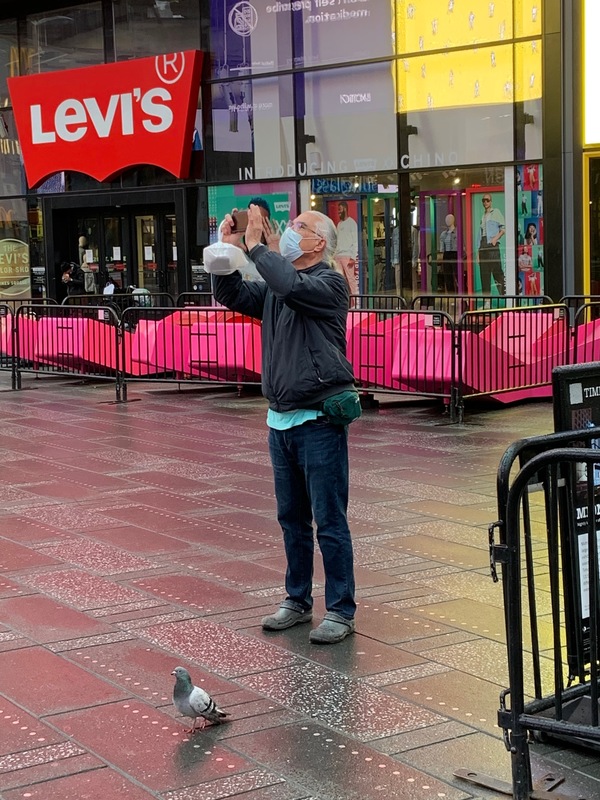
2020-04-24
After college, and a year of vagabonding through Central and South America, I moved to the city forty-two years ago. I was drawn to New York, like many, by the energy and complexity of the city itself, and more specifically, the rich and endless theater found on its streets. While the array of cultural offerings has been a source of nourishment and pleasure, it is the streetlife that keeps me as excited as my first weeks here. What I love about New York is not what I know about the city, but how much I don't know. You cannot exhaust it as a subject, and from the start, I have made the city my primary interest and subject as a photographer. I always go out with a camera and am often mistaken as a tourist because of it. I take that as a compliment, given few can match the exalted state of excitement and awareness that a tourist experiences on a visit.
When the Coronavirus hit and the staggered shutdown of the city went from a talked about possibility to a reality, I found myself inside my apartment looking out at the street below. At first, I made short trips to get necessities, then later added walks through Central Park, and now through the streets of Manhattan. If you think of a photograph as a piece of theater, with a stage set, lighting, cast, and choreography, the new version of the streetlife of New York is an eerie and fascinating show. The set and lighting is much the same, but the cast and choreography have wildly changed. Wandering through Midtown is like walking through an amusement park in the off-season. You experience the present colored by what you know it to be in season.
-
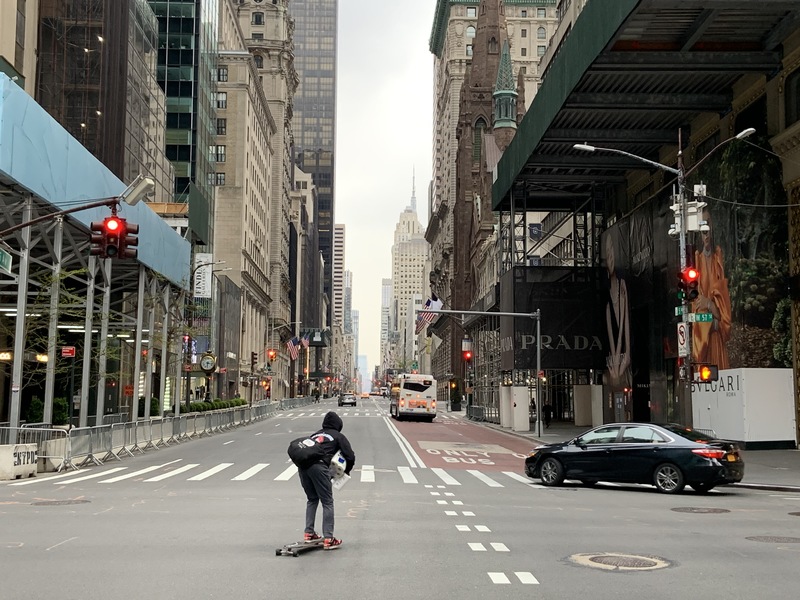
2020-04-24
After college, and a year of vagabonding through Central and South America, I moved to the city forty-two years ago. I was drawn to New York, like many, by the energy and complexity of the city itself, and more specifically, the rich and endless theater found on its streets. While the array of cultural offerings has been a source of nourishment and pleasure, it is the streetlife that keeps me as excited as my first weeks here. What I love about New York is not what I know about the city, but how much I don't know. You cannot exhaust it as a subject, and from the start, I have made the city my primary interest and subject as a photographer. I always go out with a camera and am often mistaken as a tourist because of it. I take that as a compliment, given few can match the exalted state of excitement and awareness that a tourist experiences on a visit.
When the Coronavirus hit and the staggered shutdown of the city went from a talked about possibility to a reality, I found myself inside my apartment looking out at the street below. At first, I made short trips to get necessities, then later added walks through Central Park, and now through the streets of Manhattan. If you think of a photograph as a piece of theater, with a stage set, lighting, cast, and choreography, the new version of the streetlife of New York is an eerie and fascinating show. The set and lighting is much the same, but the cast and choreography have wildly changed. Wandering through Midtown is like walking through an amusement park in the off-season. You experience the present colored by what you know it to be in season.
-
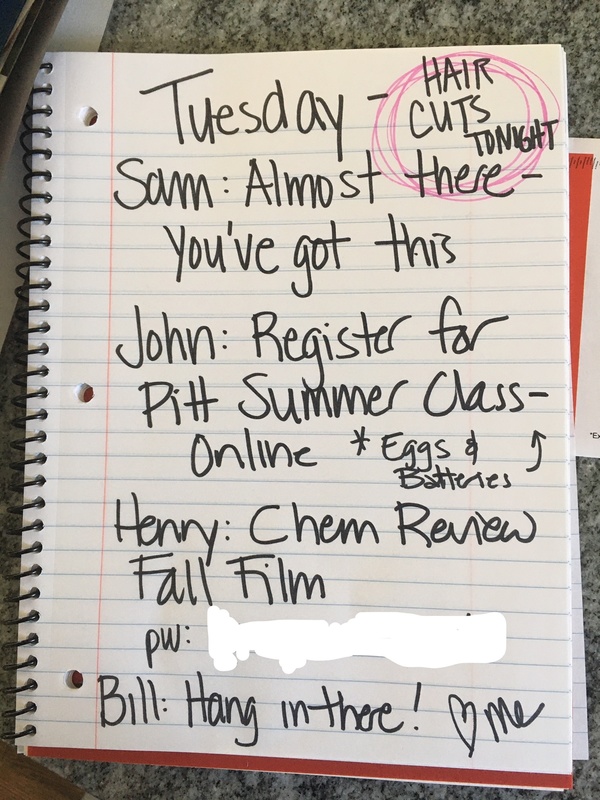
2020-04-21
The COVID-19 virus disrupts life, particularly our relationships with those we love. But, relationships are flexible and adapt to circumstance. My mom cut my hair until I left for college. Her grandfather was a barber, and because she cut my brothers' hair, too, she had a lot of practice. After COVID-19 closed our schools and sent us home, my mom cuts our hair again. On her note, she let us know that she had time to cut our hair today after work. Although COVID-19 has closed the barbers down, my brothers and I still have fresh cuts.
#FordhamUniversity #VART3030
-
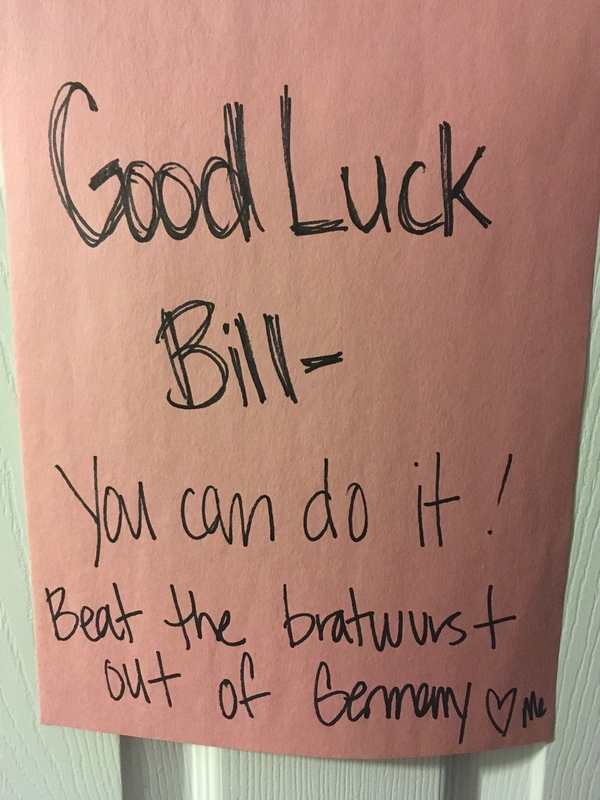
2020-04-28
The COVID-19 virus disrupts life, particularly our relationships with those we love. But, relationships are flexible and adapt to circumstance. My mom wrote my dad this sign before his big meeting with a German client overseas. He had been under a lot of stress preparing for the meeting, so my mom put this note of encouragement on his office door to let him know she was thinking about him. Although she could not wish him luck in person because she works such long hours now, she still found a way to be there for him.
#FordhamUniversity #VART3030
-

2020-04-10
The COVID-19 virus disrupts life, particularly our relationships with those we love. But, relationships are flexible and adapt to circumstance. Any other year, my mom would stay home from work on Good Friday and bring us to church, so we can see the stations of the cross. This year, the churches closed, and my mom could not afford a day off due to COVID-19. Instead, she used her morning note to remind us to celebrate in our own way: remembering her parents, "grandma and pap," and doing something kind for each other.
In keeping with traditional however, we celebrated the end of another week in quarantine with a "Pizza Payday." My mom gets paid on Fridays, so we always have pizza to celebrate. COVID-19 has caused many changes, but I am glad that has stayed the same.
#FordhamUniversity #VART3030
-
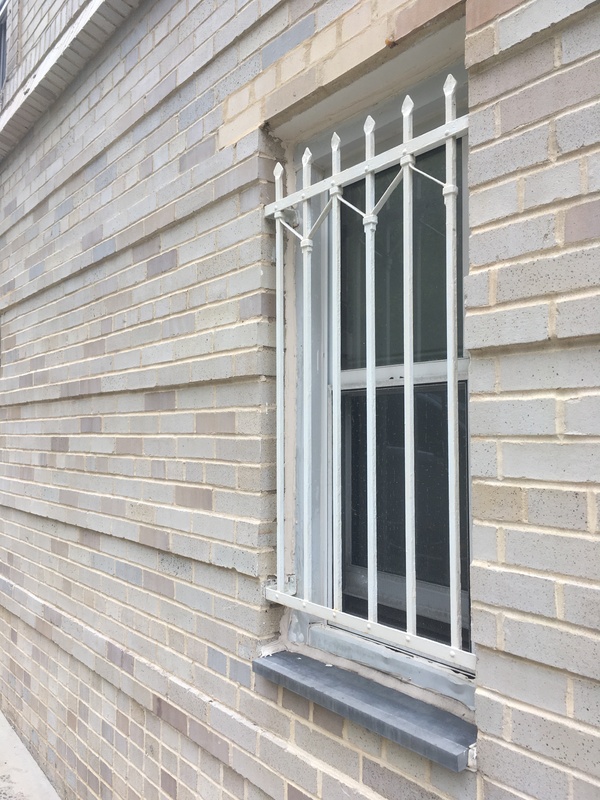
2020-04-27
In mid-march my school transitioned to virtual classes and sent everyone home for the semester. I've mostly been at home in Manhattan since then; the last time I rode the subway, previously a daily occurrence, was over six weeks ago now.
At home and in the neighborhood nearby since then, I feel as though I can look out the window onto a previous version of myself that could not have anticipated any of this. I also feel as though I look at myself now through a window, because after over a month, this all still feels fake in a way. It’s as though time has been suspended and I’m watching myself filling that time that “doesn’t count.” There is a numbness that comes with not being able to do any of what we’re used to and not being able to see people who we thought nothing of seeing every day in the past. The window analogy is both a way of conceptualizing but also deliberately engaging in that numbness and removing oneself from the reality of the situation, perhaps on both a personal and global level. It’s also a way of rebuilding the wall that has been breached by collision of home with the spaces that are normally outside of it, like work and school, and are now part of the same physical setting, albeit digitally.
This has made me think a lot about windows, which are everywhere in New York, and so I started to take pictures of windows in buildings I passed while going for walks. The windows themselves all look similar; despite differences in architectural style, they are all in essence the same glass barrier between inside and outside and public and private. It’s not something specific to life in a pandemic, but during this time it is especially relevant because for people staying mostly at home, our windows are potentially the only glimpse of the outside that we’ll see in a day. They divide our former lives and everything that we’d normally be doing outside of home from our current lives that have suspended many of those activities and digitized others.
It’s easier to think about these private separate lives going on behind the windows I pass when there are fewer people out on the street. Normally the act of passing people as I walk is more engaging than what I can’t see in the closed-off apartment buildings, but now there is not a lot going on in the streets. It’s interesting to think I’m probably closer in distance to people behind the walls of the ground floors of buildings than the people I can see on the street, especially on the less busy streets that are particularly empty these days.
-
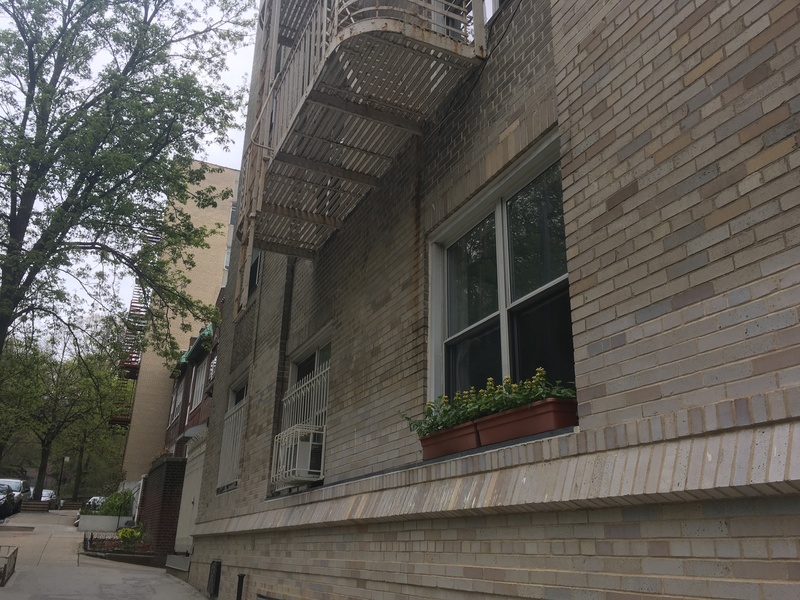
2020-04-27
In mid-march my school transitioned to virtual classes and sent everyone home for the semester. I've mostly been at home in Manhattan since then; the last time I rode the subway, previously a daily occurrence, was over six weeks ago now.
At home and in the neighborhood nearby since then, I feel as though I can look out the window onto a previous version of myself that could not have anticipated any of this. I also feel as though I look at myself now through a window, because after over a month, this all still feels fake in a way. It’s as though time has been suspended and I’m watching myself filling that time that “doesn’t count.” There is a numbness that comes with not being able to do any of what we’re used to and not being able to see people who we thought nothing of seeing every day in the past. The window analogy is both a way of conceptualizing but also deliberately engaging in that numbness and removing oneself from the reality of the situation, perhaps on both a personal and global level. It’s also a way of rebuilding the wall that has been breached by collision of home with the spaces that are normally outside of it, like work and school, and are now part of the same physical setting, albeit digitally.
This has made me think a lot about windows, which are everywhere in New York, and so I started to take pictures of windows in buildings I passed while going for walks. The windows themselves all look similar; despite differences in architectural style, they are all in essence the same glass barrier between inside and outside and public and private. It’s not something specific to life in a pandemic, but during this time it is especially relevant because for people staying mostly at home, our windows are potentially the only glimpse of the outside that we’ll see in a day. They divide our former lives and everything that we’d normally be doing outside of home from our current lives that have suspended many of those activities and digitized others.
It’s easier to think about these private separate lives going on behind the windows I pass when there are fewer people out on the street. Normally the act of passing people as I walk is more engaging than what I can’t see in the closed-off apartment buildings, but now there is not a lot going on in the streets. It’s interesting to think I’m probably closer in distance to people behind the walls of the ground floors of buildings than the people I can see on the street, especially on the less busy streets that are particularly empty these days.
-
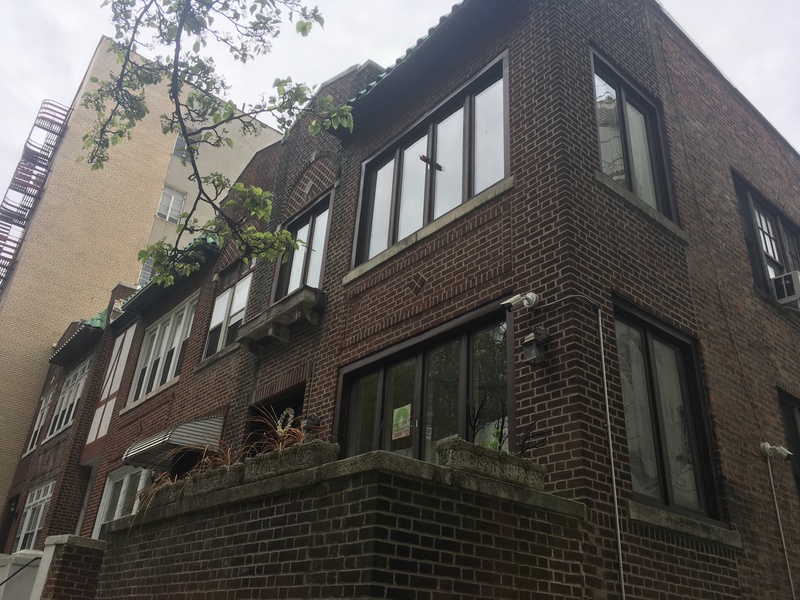
2020-04-27
In mid-march my school transitioned to virtual classes and sent everyone home for the semester. I've mostly been at home in Manhattan since then; the last time I rode the subway, previously a daily occurrence, was over six weeks ago now.
At home and in the neighborhood nearby since then, I feel as though I can look out the window onto a previous version of myself that could not have anticipated any of this. I also feel as though I look at myself now through a window, because after over a month, this all still feels fake in a way. It’s as though time has been suspended and I’m watching myself filling that time that “doesn’t count.” There is a numbness that comes with not being able to do any of what we’re used to and not being able to see people who we thought nothing of seeing every day in the past. The window analogy is both a way of conceptualizing but also deliberately engaging in that numbness and removing oneself from the reality of the situation, perhaps on both a personal and global level. It’s also a way of rebuilding the wall that has been breached by collision of home with the spaces that are normally outside of it, like work and school, and are now part of the same physical setting, albeit digitally.
This has made me think a lot about windows, which are everywhere in New York, and so I started to take pictures of windows in buildings I passed while going for walks. The windows themselves all look similar; despite differences in architectural style, they are all in essence the same glass barrier between inside and outside and public and private. It’s not something specific to life in a pandemic, but during this time it is especially relevant because for people staying mostly at home, our windows are potentially the only glimpse of the outside that we’ll see in a day. They divide our former lives and everything that we’d normally be doing outside of home from our current lives that have suspended many of those activities and digitized others.
It’s easier to think about these private separate lives going on behind the windows I pass when there are fewer people out on the street. Normally the act of passing people as I walk is more engaging than what I can’t see in the closed-off apartment buildings, but now there is not a lot going on in the streets. It’s interesting to think I’m probably closer in distance to people behind the walls of the ground floors of buildings than the people I can see on the street, especially on the less busy streets that are particularly empty these days.
-
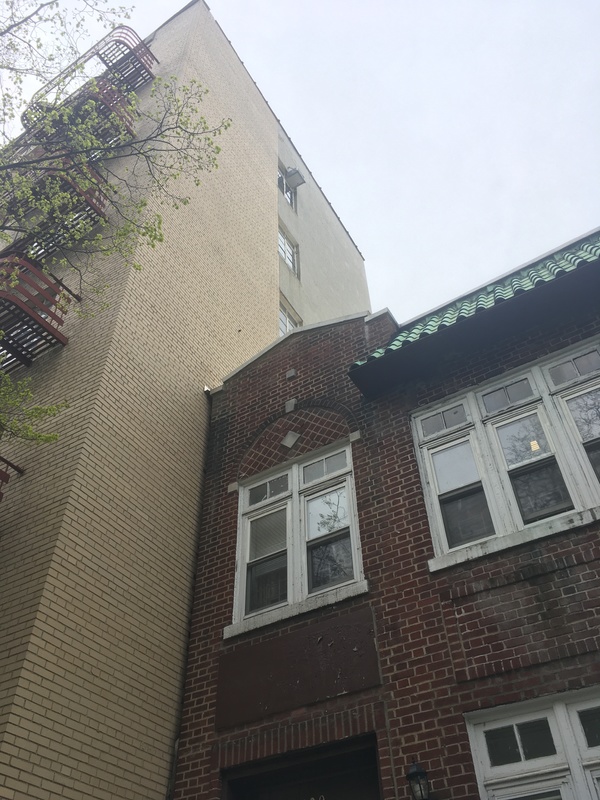
2020-04-27
In mid-march my school transitioned to virtual classes and sent everyone home for the semester. I've mostly been at home in Manhattan since then; the last time I rode the subway, previously a daily occurrence, was over six weeks ago now.
At home and in the neighborhood nearby since then, I feel as though I can look out the window onto a previous version of myself that could not have anticipated any of this. I also feel as though I look at myself now through a window, because after over a month, this all still feels fake in a way. It’s as though time has been suspended and I’m watching myself filling that time that “doesn’t count.” There is a numbness that comes with not being able to do any of what we’re used to and not being able to see people who we thought nothing of seeing every day in the past. The window analogy is both a way of conceptualizing but also deliberately engaging in that numbness and removing oneself from the reality of the situation, perhaps on both a personal and global level. It’s also a way of rebuilding the wall that has been breached by collision of home with the spaces that are normally outside of it, like work and school, and are now part of the same physical setting, albeit digitally.
This has made me think a lot about windows, which are everywhere in New York, and so I started to take pictures of windows in buildings I passed while going for walks. The windows themselves all look similar; despite differences in architectural style, they are all in essence the same glass barrier between inside and outside and public and private. It’s not something specific to life in a pandemic, but during this time it is especially relevant because for people staying mostly at home, our windows are potentially the only glimpse of the outside that we’ll see in a day. They divide our former lives and everything that we’d normally be doing outside of home from our current lives that have suspended many of those activities and digitized others.
It’s easier to think about these private separate lives going on behind the windows I pass when there are fewer people out on the street. Normally the act of passing people as I walk is more engaging than what I can’t see in the closed-off apartment buildings, but now there is not a lot going on in the streets. It’s interesting to think I’m probably closer in distance to people behind the walls of the ground floors of buildings than the people I can see on the street, especially on the less busy streets that are particularly empty these days.
-
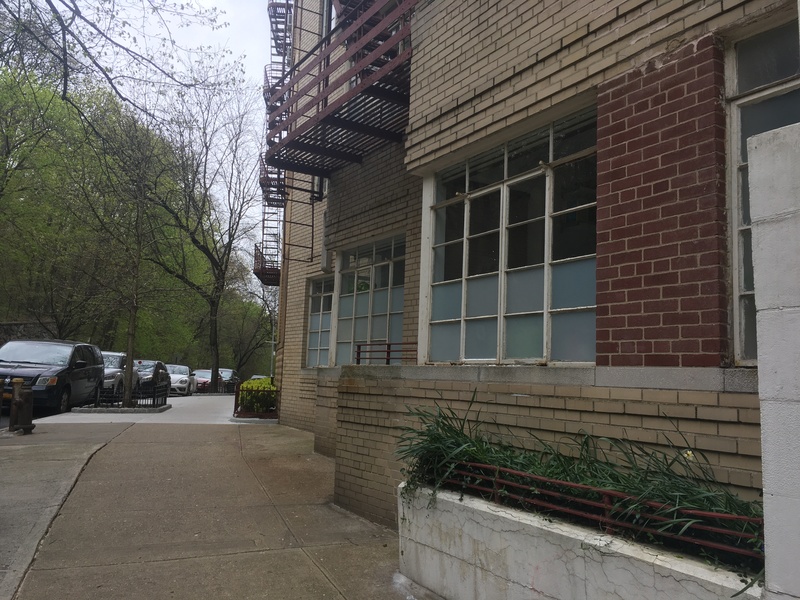
2020-04-27
In mid-march my school transitioned to virtual classes and sent everyone home for the semester. I've mostly been at home in Manhattan since then; the last time I rode the subway, previously a daily occurrence, was over six weeks ago now.
At home and in the neighborhood nearby since then, I feel as though I can look out the window onto a previous version of myself that could not have anticipated any of this. I also feel as though I look at myself now through a window, because after over a month, this all still feels fake in a way. It’s as though time has been suspended and I’m watching myself filling that time that “doesn’t count.” There is a numbness that comes with not being able to do any of what we’re used to and not being able to see people who we thought nothing of seeing every day in the past. The window analogy is both a way of conceptualizing but also deliberately engaging in that numbness and removing oneself from the reality of the situation, perhaps on both a personal and global level. It’s also a way of rebuilding the wall that has been breached by collision of home with the spaces that are normally outside of it, like work and school, and are now part of the same physical setting, albeit digitally.
This has made me think a lot about windows, which are everywhere in New York, and so I started to take pictures of windows in buildings I passed while going for walks. The windows themselves all look similar; despite differences in architectural style, they are all in essence the same glass barrier between inside and outside and public and private. It’s not something specific to life in a pandemic, but during this time it is especially relevant because for people staying mostly at home, our windows are potentially the only glimpse of the outside that we’ll see in a day. They divide our former lives and everything that we’d normally be doing outside of home from our current lives that have suspended many of those activities and digitized others.
It’s easier to think about these private separate lives going on behind the windows I pass when there are fewer people out on the street. Normally the act of passing people as I walk is more engaging than what I can’t see in the closed-off apartment buildings, but now there is not a lot going on in the streets. It’s interesting to think I’m probably closer in distance to people behind the walls of the ground floors of buildings than the people I can see on the street, especially on the less busy streets that are particularly empty these days.
-
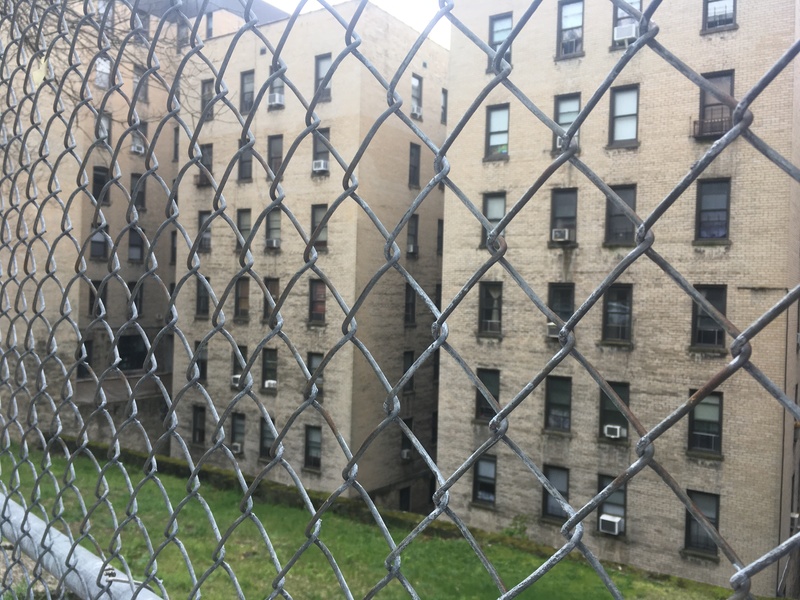
2020-04-27
In mid-march my school transitioned to virtual classes and sent everyone home for the semester. I've mostly been at home in Manhattan since then; the last time I rode the subway, previously a daily occurrence, was over six weeks ago now.
At home and in the neighborhood nearby since then, I feel as though I can look out the window onto a previous version of myself that could not have anticipated any of this. I also feel as though I look at myself now through a window, because after over a month, this all still feels fake in a way. It’s as though time has been suspended and I’m watching myself filling that time that “doesn’t count.” There is a numbness that comes with not being able to do any of what we’re used to and not being able to see people who we thought nothing of seeing every day in the past. The window analogy is both a way of conceptualizing but also deliberately engaging in that numbness and removing oneself from the reality of the situation, perhaps on both a personal and global level. It’s also a way of rebuilding the wall that has been breached by collision of home with the spaces that are normally outside of it, like work and school, and are now part of the same physical setting, albeit digitally.
This has made me think a lot about windows, which are everywhere in New York, and so I started to take pictures of windows in buildings I passed while going for walks. The windows themselves all look similar; despite differences in architectural style, they are all in essence the same glass barrier between inside and outside and public and private. It’s not something specific to life in a pandemic, but during this time it is especially relevant because for people staying mostly at home, our windows are potentially the only glimpse of the outside that we’ll see in a day. They divide our former lives and everything that we’d normally be doing outside of home from our current lives that have suspended many of those activities and digitized others.
It’s easier to think about these private separate lives going on behind the windows I pass when there are fewer people out on the street. Normally the act of passing people as I walk is more engaging than what I can’t see in the closed-off apartment buildings, but now there is not a lot going on in the streets. It’s interesting to think I’m probably closer in distance to people behind the walls of the ground floors of buildings than the people I can see on the street, especially on the less busy streets that are particularly empty these days.
-
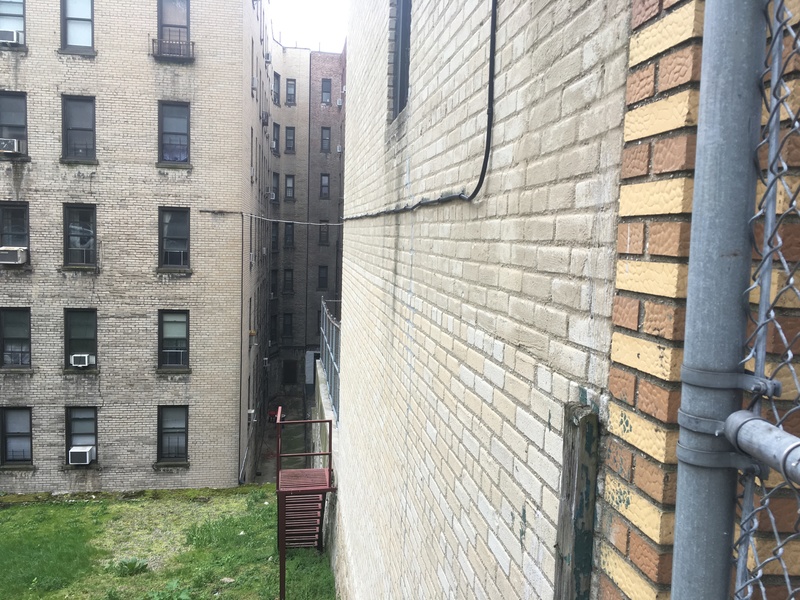
2020-04-27
In mid-march my school transitioned to virtual classes and sent everyone home for the semester. I've mostly been at home in Manhattan since then; the last time I rode the subway, previously a daily occurrence, was over six weeks ago now.
At home and in the neighborhood nearby since then, I feel as though I can look out the window onto a previous version of myself that could not have anticipated any of this. I also feel as though I look at myself now through a window, because after over a month, this all still feels fake in a way. It’s as though time has been suspended and I’m watching myself filling that time that “doesn’t count.” There is a numbness that comes with not being able to do any of what we’re used to and not being able to see people who we thought nothing of seeing every day in the past. The window analogy is both a way of conceptualizing but also deliberately engaging in that numbness and removing oneself from the reality of the situation, perhaps on both a personal and global level. It’s also a way of rebuilding the wall that has been breached by collision of home with the spaces that are normally outside of it, like work and school, and are now part of the same physical setting, albeit digitally.
This has made me think a lot about windows, which are everywhere in New York, and so I started to take pictures of windows in buildings I passed while going for walks. The windows themselves all look similar; despite differences in architectural style, they are all in essence the same glass barrier between inside and outside and public and private. It’s not something specific to life in a pandemic, but during this time it is especially relevant because for people staying mostly at home, our windows are potentially the only glimpse of the outside that we’ll see in a day. They divide our former lives and everything that we’d normally be doing outside of home from our current lives that have suspended many of those activities and digitized others.
It’s easier to think about these private separate lives going on behind the windows I pass when there are fewer people out on the street. Normally the act of passing people as I walk is more engaging than what I can’t see in the closed-off apartment buildings, but now there is not a lot going on in the streets. It’s interesting to think I’m probably closer in distance to people behind the walls of the ground floors of buildings than the people I can see on the street, especially on the less busy streets that are particularly empty these days.
-
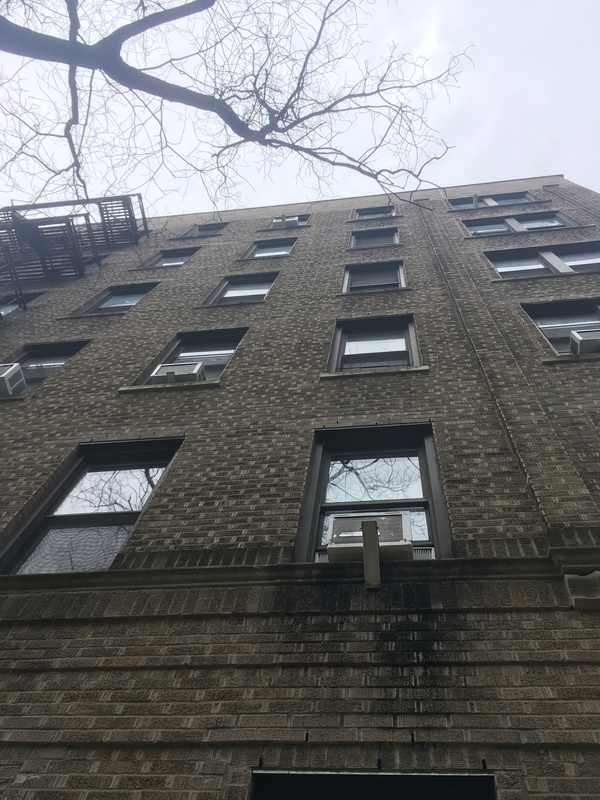
2020-04-27
In mid-march my school transitioned to virtual classes and sent everyone home for the semester. I've mostly been at home in Manhattan since then; the last time I rode the subway, previously a daily occurrence, was over six weeks ago now.
At home and in the neighborhood nearby since then, I feel as though I can look out the window onto a previous version of myself that could not have anticipated any of this. I also feel as though I look at myself now through a window, because after over a month, this all still feels fake in a way. It’s as though time has been suspended and I’m watching myself filling that time that “doesn’t count.” There is a numbness that comes with not being able to do any of what we’re used to and not being able to see people who we thought nothing of seeing every day in the past. The window analogy is both a way of conceptualizing but also deliberately engaging in that numbness and removing oneself from the reality of the situation, perhaps on both a personal and global level. It’s also a way of rebuilding the wall that has been breached by collision of home with the spaces that are normally outside of it, like work and school, and are now part of the same physical setting, albeit digitally.
This has made me think a lot about windows, which are everywhere in New York, and so I started to take pictures of windows in buildings I passed while going for walks. The windows themselves all look similar; despite differences in architectural style, they are all in essence the same glass barrier between inside and outside and public and private. It’s not something specific to life in a pandemic, but during this time it is especially relevant because for people staying mostly at home, our windows are potentially the only glimpse of the outside that we’ll see in a day. They divide our former lives and everything that we’d normally be doing outside of home from our current lives that have suspended many of those activities and digitized others.
It’s easier to think about these private separate lives going on behind the windows I pass when there are fewer people out on the street. Normally the act of passing people as I walk is more engaging than what I can’t see in the closed-off apartment buildings, but now there is not a lot going on in the streets. It’s interesting to think I’m probably closer in distance to people behind the walls of the ground floors of buildings than the people I can see on the street, especially on the less busy streets that are particularly empty these days.
-
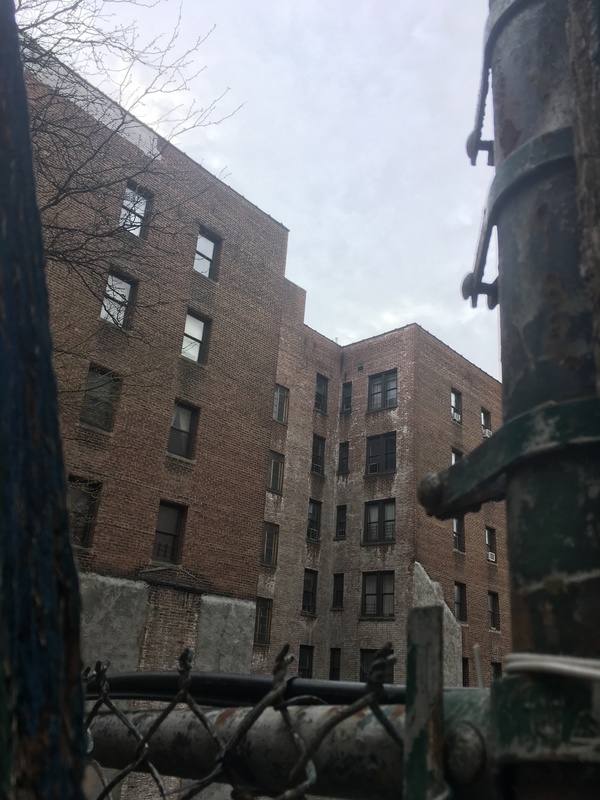
2020-04-27
In mid-march my school transitioned to virtual classes and sent everyone home for the semester. I've mostly been at home in Manhattan since then; the last time I rode the subway, previously a daily occurrence, was over six weeks ago now.
At home and in the neighborhood nearby since then, I feel as though I can look out the window onto a previous version of myself that could not have anticipated any of this. I also feel as though I look at myself now through a window, because after over a month, this all still feels fake in a way. It’s as though time has been suspended and I’m watching myself filling that time that “doesn’t count.” There is a numbness that comes with not being able to do any of what we’re used to and not being able to see people who we thought nothing of seeing every day in the past. The window analogy is both a way of conceptualizing but also deliberately engaging in that numbness and removing oneself from the reality of the situation, perhaps on both a personal and global level. It’s also a way of rebuilding the wall that has been breached by collision of home with the spaces that are normally outside of it, like work and school, and are now part of the same physical setting, albeit digitally.
This has made me think a lot about windows, which are everywhere in New York, and so I started to take pictures of windows in buildings I passed while going for walks. The windows themselves all look similar; despite differences in architectural style, they are all in essence the same glass barrier between inside and outside and public and private. It’s not something specific to life in a pandemic, but during this time it is especially relevant because for people staying mostly at home, our windows are potentially the only glimpse of the outside that we’ll see in a day. They divide our former lives and everything that we’d normally be doing outside of home from our current lives that have suspended many of those activities and digitized others.
It’s easier to think about these private separate lives going on behind the windows I pass when there are fewer people out on the street. Normally the act of passing people as I walk is more engaging than what I can’t see in the closed-off apartment buildings, but now there is not a lot going on in the streets. It’s interesting to think I’m probably closer in distance to people behind the walls of the ground floors of buildings than the people I can see on the street, especially on the less busy streets that are particularly empty these days.
-
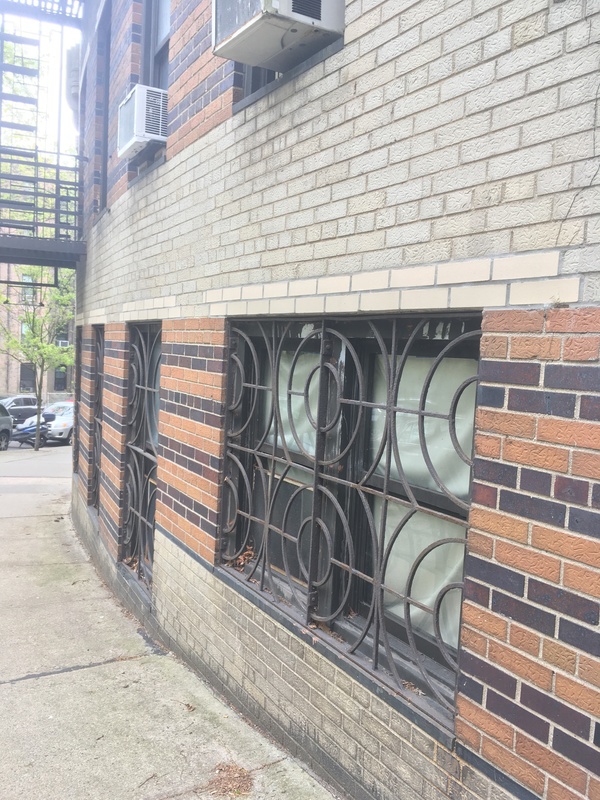
2020-04-27
In mid-march my school transitioned to virtual classes and sent everyone home for the semester. I've mostly been at home in Manhattan since then; the last time I rode the subway, previously a daily occurrence, was over six weeks ago now.
At home and in the neighborhood nearby since then, I feel as though I can look out the window onto a previous version of myself that could not have anticipated any of this. I also feel as though I look at myself now through a window, because after over a month, this all still feels fake in a way. It’s as though time has been suspended and I’m watching myself filling that time that “doesn’t count.” There is a numbness that comes with not being able to do any of what we’re used to and not being able to see people who we thought nothing of seeing every day in the past. The window analogy is both a way of conceptualizing but also deliberately engaging in that numbness and removing oneself from the reality of the situation, perhaps on both a personal and global level. It’s also a way of rebuilding the wall that has been breached by collision of home with the spaces that are normally outside of it, like work and school, and are now part of the same physical setting, albeit digitally.
This has made me think a lot about windows, which are everywhere in New York, and so I started to take pictures of windows in buildings I passed while going for walks. The windows themselves all look similar; despite differences in architectural style, they are all in essence the same glass barrier between inside and outside and public and private. It’s not something specific to life in a pandemic, but during this time it is especially relevant because for people staying mostly at home, our windows are potentially the only glimpse of the outside that we’ll see in a day. They divide our former lives and everything that we’d normally be doing outside of home from our current lives that have suspended many of those activities and digitized others.
It’s easier to think about these private separate lives going on behind the windows I pass when there are fewer people out on the street. Normally the act of passing people as I walk is more engaging than what I can’t see in the closed-off apartment buildings, but now there is not a lot going on in the streets. It’s interesting to think I’m probably closer in distance to people behind the walls of the ground floors of buildings than the people I can see on the street, especially on the less busy streets that are particularly empty these days.
-
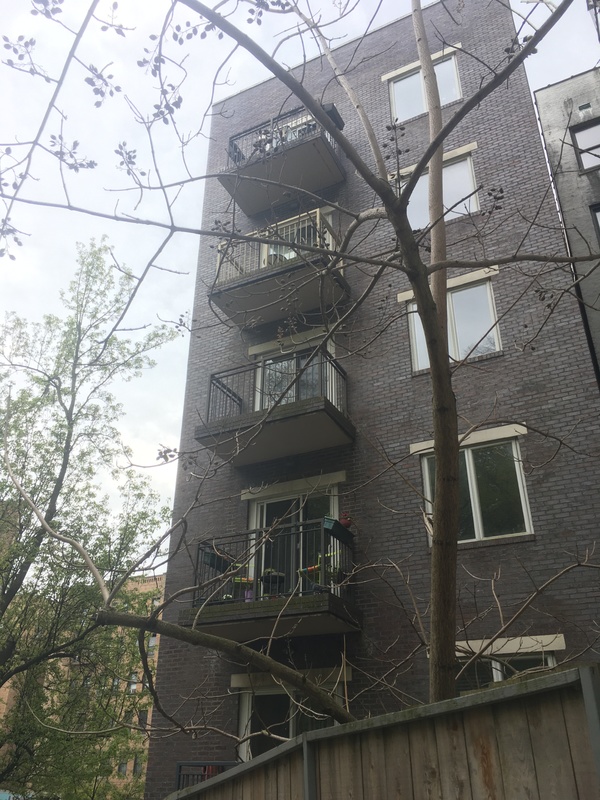
2020-04-27
In mid-march my school transitioned to virtual classes and sent everyone home for the semester. I've mostly been at home in Manhattan since then; the last time I rode the subway, previously a daily occurrence, was over six weeks ago now.
At home and in the neighborhood nearby since then, I feel as though I can look out the window onto a previous version of myself that could not have anticipated any of this. I also feel as though I look at myself now through a window, because after over a month, this all still feels fake in a way. It’s as though time has been suspended and I’m watching myself filling that time that “doesn’t count.” There is a numbness that comes with not being able to do any of what we’re used to and not being able to see people who we thought nothing of seeing every day in the past. The window analogy is both a way of conceptualizing but also deliberately engaging in that numbness and removing oneself from the reality of the situation, perhaps on both a personal and global level. It’s also a way of rebuilding the wall that has been breached by collision of home with the spaces that are normally outside of it, like work and school, and are now part of the same physical setting, albeit digitally.
This has made me think a lot about windows, which are everywhere in New York, and so I started to take pictures of windows in buildings I passed while going for walks. The windows themselves all look similar; despite differences in architectural style, they are all in essence the same glass barrier between inside and outside and public and private. It’s not something specific to life in a pandemic, but during this time it is especially relevant because for people staying mostly at home, our windows are potentially the only glimpse of the outside that we’ll see in a day. They divide our former lives and everything that we’d normally be doing outside of home from our current lives that have suspended many of those activities and digitized others.
It’s easier to think about these private separate lives going on behind the windows I pass when there are fewer people out on the street. Normally the act of passing people as I walk is more engaging than what I can’t see in the closed-off apartment buildings, but now there is not a lot going on in the streets. It’s interesting to think I’m probably closer in distance to people behind the walls of the ground floors of buildings than the people I can see on the street, especially on the less busy streets that are particularly empty these days.
-
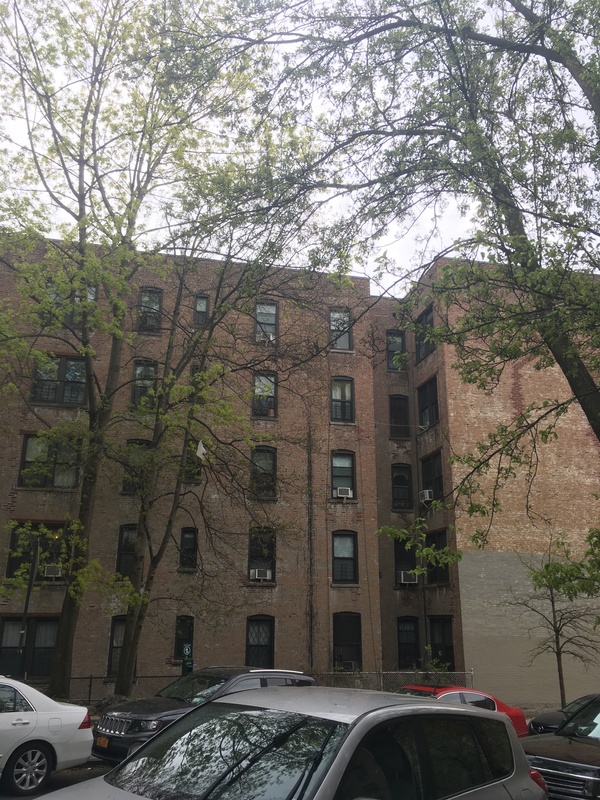
2020-04-27
In mid-march my school transitioned to virtual classes and sent everyone home for the semester. I've mostly been at home in Manhattan since then; the last time I rode the subway, previously a daily occurrence, was over six weeks ago now.
At home and in the neighborhood nearby since then, I feel as though I can look out the window onto a previous version of myself that could not have anticipated any of this. I also feel as though I look at myself now through a window, because after over a month, this all still feels fake in a way. It’s as though time has been suspended and I’m watching myself filling that time that “doesn’t count.” There is a numbness that comes with not being able to do any of what we’re used to and not being able to see people who we thought nothing of seeing every day in the past. The window analogy is both a way of conceptualizing but also deliberately engaging in that numbness and removing oneself from the reality of the situation, perhaps on both a personal and global level. It’s also a way of rebuilding the wall that has been breached by collision of home with the spaces that are normally outside of it, like work and school, and are now part of the same physical setting, albeit digitally.
This has made me think a lot about windows, which are everywhere in New York, and so I started to take pictures of windows in buildings I passed while going for walks. The windows themselves all look similar; despite differences in architectural style, they are all in essence the same glass barrier between inside and outside and public and private. It’s not something specific to life in a pandemic, but during this time it is especially relevant because for people staying mostly at home, our windows are potentially the only glimpse of the outside that we’ll see in a day. They divide our former lives and everything that we’d normally be doing outside of home from our current lives that have suspended many of those activities and digitized others.
It’s easier to think about these private separate lives going on behind the windows I pass when there are fewer people out on the street. Normally the act of passing people as I walk is more engaging than what I can’t see in the closed-off apartment buildings, but now there is not a lot going on in the streets. It’s interesting to think I’m probably closer in distance to people behind the walls of the ground floors of buildings than the people I can see on the street, especially on the less busy streets that are particularly empty these days.
-
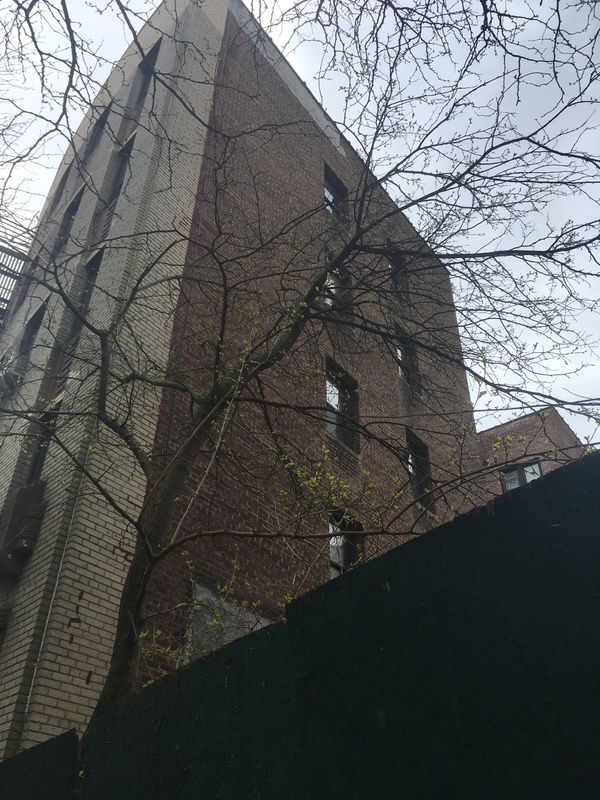
2020-04-27
In mid-march my school transitioned to virtual classes and sent everyone home for the semester. I've mostly been at home in Manhattan since then; the last time I rode the subway, previously a daily occurrence, was over six weeks ago now.
At home and in the neighborhood nearby since then, I feel as though I can look out the window onto a previous version of myself that could not have anticipated any of this. I also feel as though I look at myself now through a window, because after over a month, this all still feels fake in a way. It’s as though time has been suspended and I’m watching myself filling that time that “doesn’t count.” There is a numbness that comes with not being able to do any of what we’re used to and not being able to see people who we thought nothing of seeing every day in the past. The window analogy is both a way of conceptualizing but also deliberately engaging in that numbness and removing oneself from the reality of the situation, perhaps on both a personal and global level. It’s also a way of rebuilding the wall that has been breached by collision of home with the spaces that are normally outside of it, like work and school, and are now part of the same physical setting, albeit digitally.
This has made me think a lot about windows, which are everywhere in New York, and so I started to take pictures of windows in buildings I passed while going for walks. The windows themselves all look similar; despite differences in architectural style, they are all in essence the same glass barrier between inside and outside and public and private. It’s not something specific to life in a pandemic, but during this time it is especially relevant because for people staying mostly at home, our windows are potentially the only glimpse of the outside that we’ll see in a day. They divide our former lives and everything that we’d normally be doing outside of home from our current lives that have suspended many of those activities and digitized others.
It’s easier to think about these private separate lives going on behind the windows I pass when there are fewer people out on the street. Normally the act of passing people as I walk is more engaging than what I can’t see in the closed-off apartment buildings, but now there is not a lot going on in the streets. It’s interesting to think I’m probably closer in distance to people behind the walls of the ground floors of buildings than the people I can see on the street, especially on the less busy streets that are particularly empty these days.
-
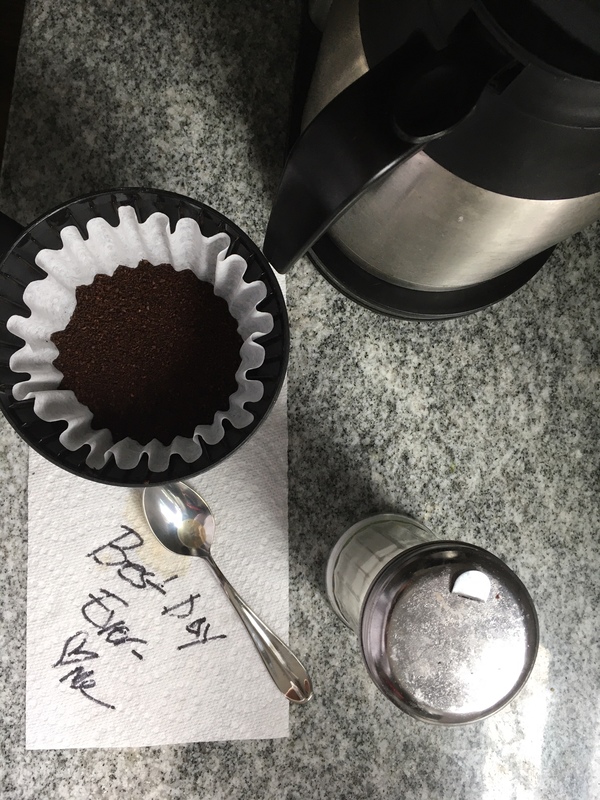
2020-04-09
The COVID-19 virus disrupts life, particularly our relationships with those we love. But, relationships are flexible and adapt to circumstance. Due to the stress the virus puts on her non-profit organization, my mom must leave earlier for work and cannot see my dad in the morning. So, in addition to leaving notes for my brothers and I, she leaves a few for him. Most of these notes offer him encouragement, as working remotely is a stressful change for most people. Next to her note, she leaves a coffee filter filled with coffee grinds, so he can make his cup of morning joe. Although my mom cannot do these things in person anymore, she still lets my dad know shes there for him.
#FordhamUniversity #VART3030
-
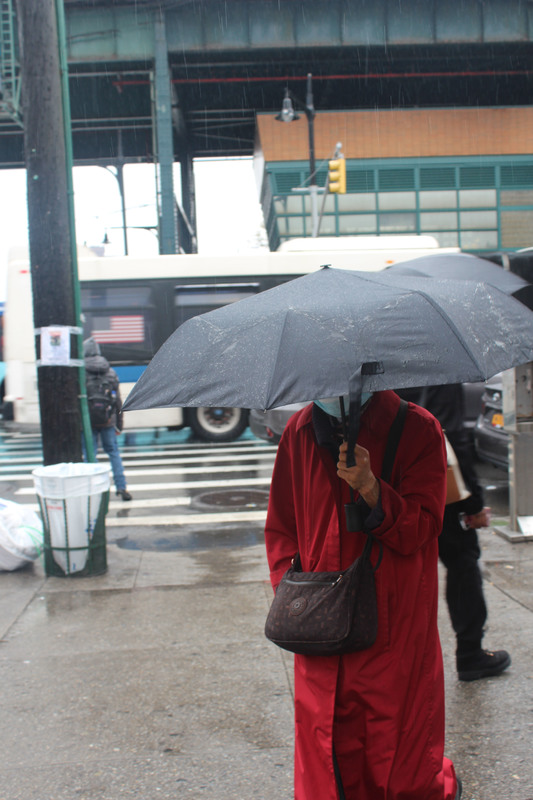
2020-05-01
A person walks with a mask covering his face and an umbrella covering his body
-
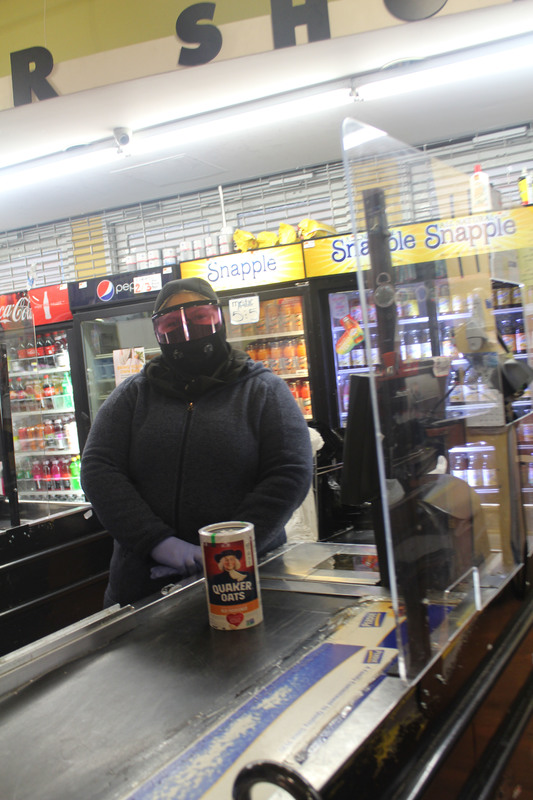
2020-05-01
A cashier at the supermarket takes a moment to take a picture. She stands smiling (I think) wearing a face shield and mask over her mouth.
-
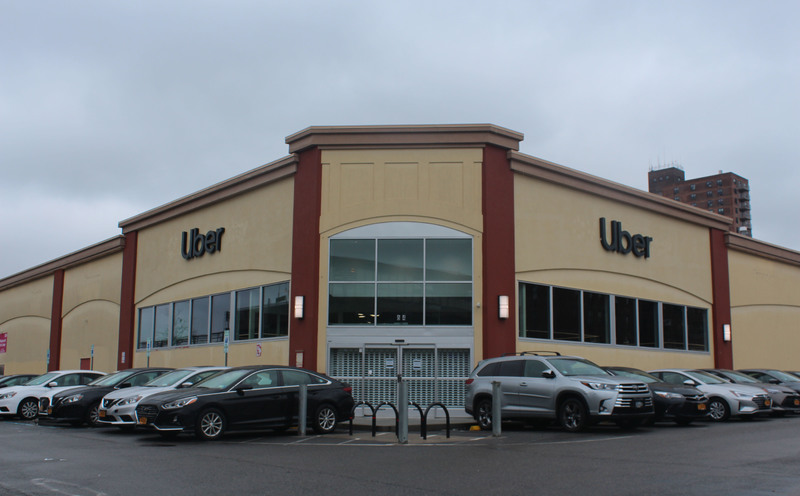
2020-05-01
Uber's gate is down and the parking lot is filled. Could Uber really be closed?
-
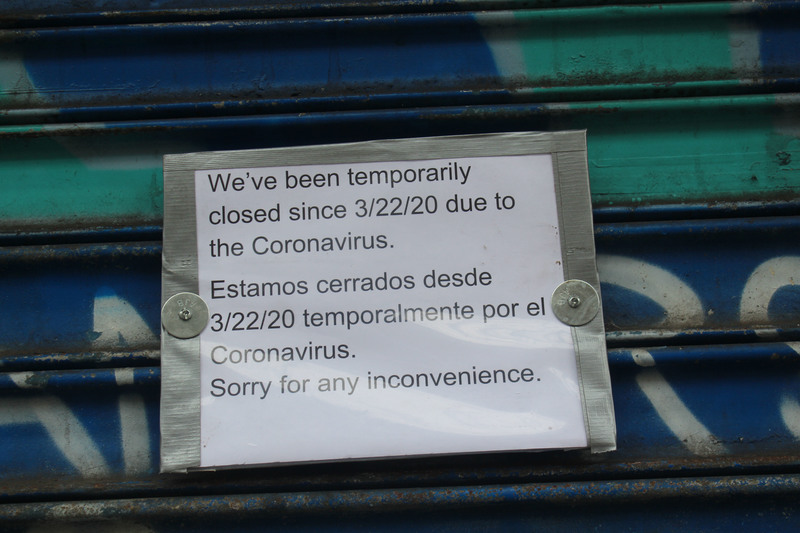
2020-05-01
The gate is down, the sign tells us that the cleaners is closed. I should have picked up my clothes sooner....
-
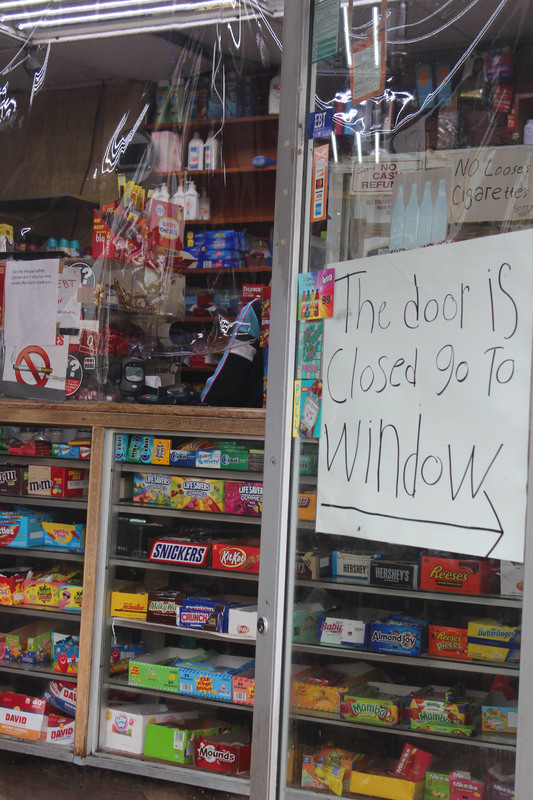
2020-05-01
The corner store gives directors where to go- the door is closed, go to the window. A plastic covering is placed between the merchant and the buyer
-
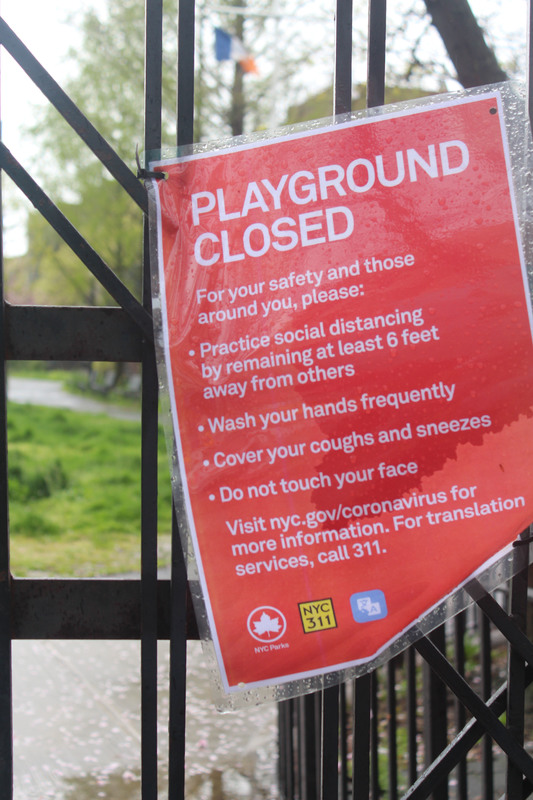
2020-05-01
A sign and lock on the gate: The playground is closed
-

2020-05-01
Merchants restocking their store while wearing masks.
-

2020-05-01
A wall mural reminding people of the dangers of blue light.
-
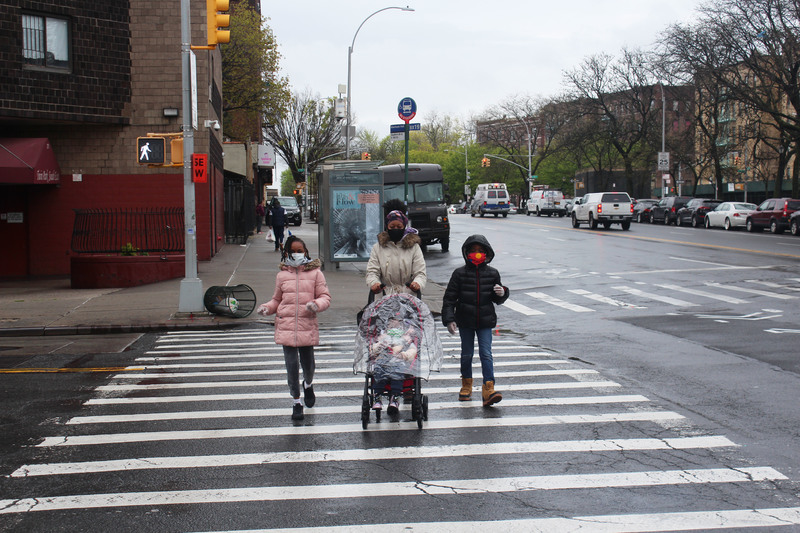
2020-05-01
Honduran Siblings crossing the street in the Bronx with their faces hid by masks.
 27/04/2020
27/04/2020 2020-04-26
2020-04-26 2020-03-27
2020-03-27 2020-04-21
2020-04-21 2020-04-12
2020-04-12 2020-04-09
2020-04-09 2020-03-20
2020-03-20 2020-04-10
2020-04-10 2020-03-19
2020-03-19 2020-05-04
2020-05-04 2020-05-03
2020-05-03 2020-04-12
2020-04-12 2020-04-12
2020-04-12 2020-04-13
2020-04-13 2020-04-19
2020-04-19 2020-04-12
2020-04-12 2020-04-08
2020-04-08 2020-04-24
2020-04-24 2020-04-24
2020-04-24 2020-04-24
2020-04-24 2020-04-24
2020-04-24 2020-04-24
2020-04-24 2020-04-24
2020-04-24 2020-04-24
2020-04-24 2020-04-21
2020-04-21 2020-04-28
2020-04-28 2020-04-10
2020-04-10 2020-04-27
2020-04-27 2020-04-27
2020-04-27 2020-04-27
2020-04-27 2020-04-27
2020-04-27 2020-04-27
2020-04-27 2020-04-27
2020-04-27 2020-04-27
2020-04-27 2020-04-27
2020-04-27 2020-04-27
2020-04-27 2020-04-27
2020-04-27 2020-04-27
2020-04-27 2020-04-27
2020-04-27 2020-04-27
2020-04-27 2020-04-09
2020-04-09 2020-05-01
2020-05-01 2020-05-01
2020-05-01 2020-05-01
2020-05-01 2020-05-01
2020-05-01 2020-05-01
2020-05-01 2020-05-01
2020-05-01 2020-05-01
2020-05-01 2020-05-01
2020-05-01 2020-05-01
2020-05-01